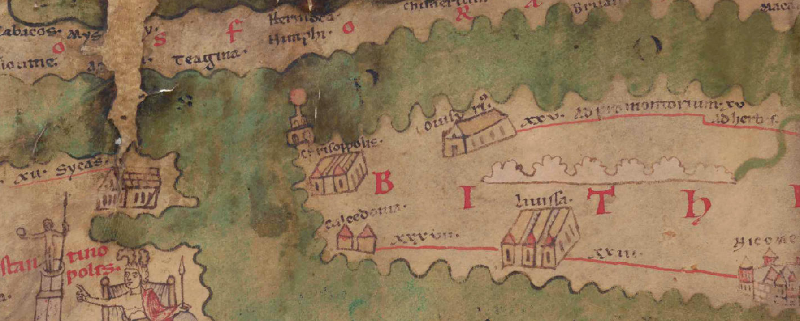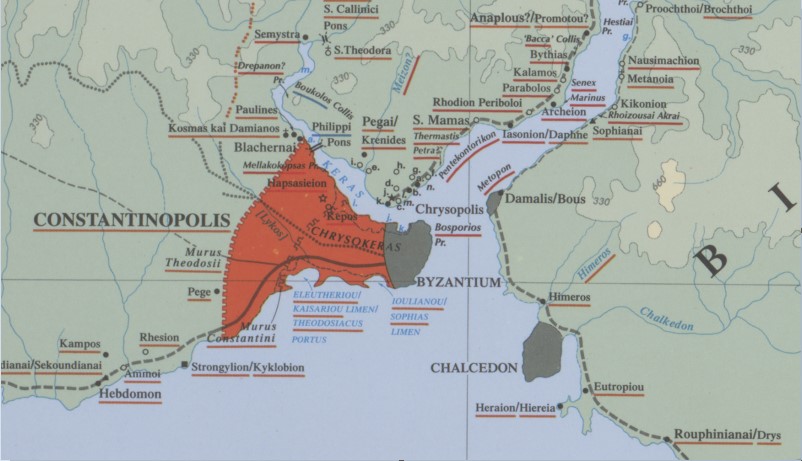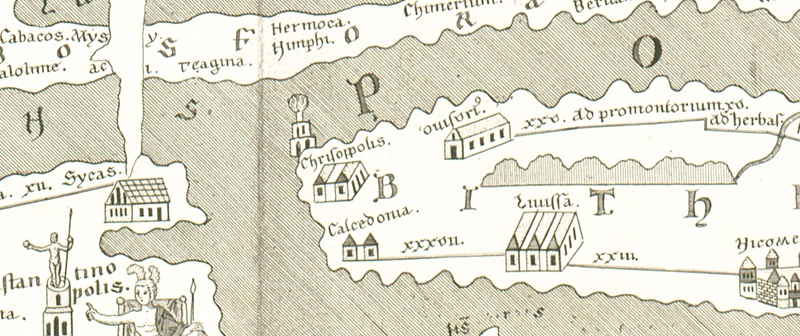
Tabula Peutingeriana – Single display of hits
| Toponym TP (renewed): | Chrisoppolis |
| Name (modern): | Üsküdar |
| Image: |  To the image detail |
| Toponym before | |
| Toponym following | - Iouisvrius (Iovis Urius) - Calcedonia |
| Alternative Image | --- |
| Image (Barrington 2000) |
 |
| Image (Scheyb 1753) |
 |
| Image (Welser 1598) | --- |
| Image (MSI 2025) | --- |
| Pleiades: | https://pleiades.stoa.org/places/520995 |
| Area: | Asia Minor |
| Toponym Type: | Toponym with Symbol |
| Grid square: | 8A1 / 8A2 |
| Toponym Color: | black |
| Vignette Type : | D Hall |
| Itinerary: |
|
| Alternative Name (Lexica): |
|
| Name A (RE): | Chryospolis 1 |
| Name B (Barrington Atlas): | Chrysopolis (53 B2) |
| Name C (TIR/TIB/others): | Chrysopolis (TIB 13, 504-510) |
| Name D (Miller): | Chrisoppolis |
| Name E (Levi): | Chrisoppolis (D,7) |
| Name F (Ravennate): |
|
| Name G (Ptolemy): |
|
| Plinius: |
|
| Strabo: |
|
| Dating from Toponym on TP: | Late Antiquity (from Diocletian and 4th century) |
| Argument for Dating: | Der Ort ist zwar schon seit dem 4. Jh. (Xenophon) in der Literatur belegt, aber die Gesamtkomposition der Vignetten im Ensemble mit Sycas und Constantinopolis deutet auf die konstantinische Zeit oder später hin, besonders nach dem Sieg Konstantins über Licinius am 18. September 324 der dem Ort besondere Bedeutung verlieh. |
| Commentary on the Toponym: |
Das "h" ist stark verwischt. |
| References: |
Belke, Klaus: Tore nach Kleinasien. Die Konstantinopel gegenüberliegenden Häfen Chalkedon, Chrysopolis, Hiereia und Eutropiu Limen, in: Daim, F. (Hg.): Die byzantinischen |
| Last Update: | 26.06.2025 11:01 |
Cite this page:
https://www1.ku.de/ggf/ag/tabula_peutingeriana/trefferanzeige_en.php?id=1180 [last accessed on November 4, 2025]